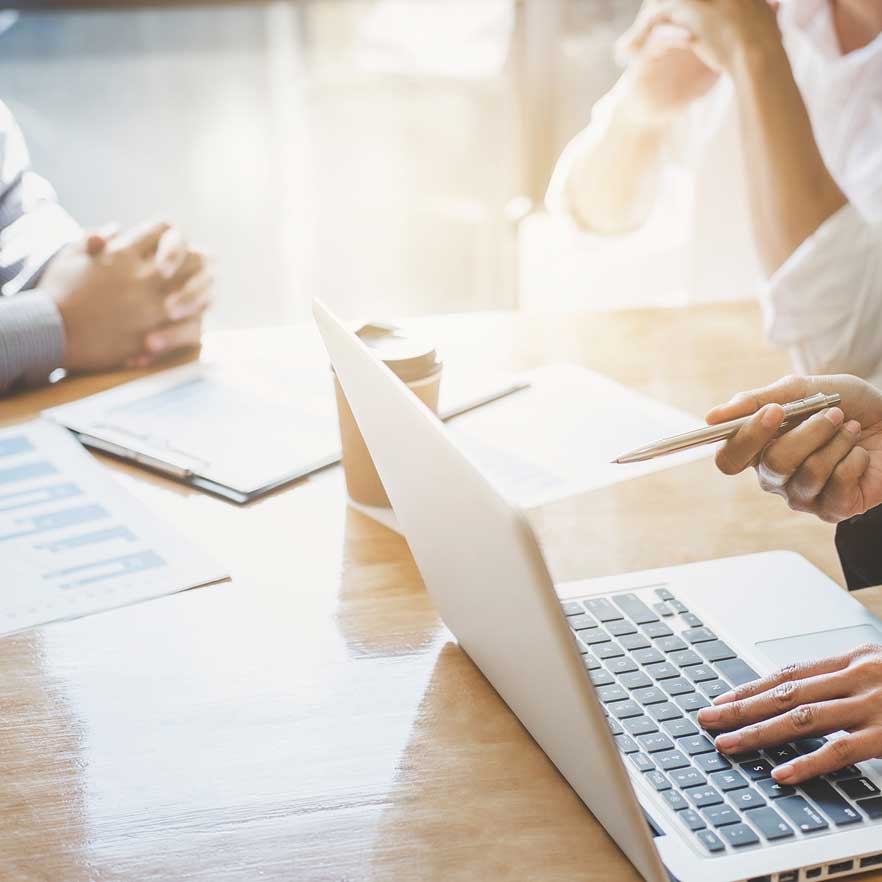If you have a website, online business or ecommerce shop, you need to be aware of the sales funnel concept; how to create one and how to benefit from one.
The sales funnel is simply a process that most potential customers go through each time they buy a product or service online. Of course, there are always customers that know exactly what they want, do one quick online search and click ‘Purchase’ straight away. But for everyone else, there’s usually a traditional process of finding and buying online.
The concept compares the buying process to a funnel, because although you may start out with a high number or people in step one, as people pass along the stages, some drop out, go elsewhere, or just never commit to actually buying, so the number of people you’re targeting at each stage of the funnel reduces.


Every time a customer moves on a stage in the funnel, they become more committed to buying so it’s important to engage with your customers at every stage to secure the highest possible number of leads, and hopefully sales.
As a business owner, or digital marketer, it’s your job to move potential customers through the stages of the funnel until they become paying customers.
The 4 Stages of a Sales Funnel, in order of the buying process:
There may be more stages if your product or service is complex, or the journey may look different depending on the type of person and the product. For example, buying a light bulb may go from awareness to action immediately. The buyer realises their light bulb has gone and they are in a hurry, they might click straight into Amazon and buy the first one they see. Or, if the buyer is looking for the perfect honeymoon holiday, they might spend a lot more time researching destinations and pop back and forth between decision making and interest for quite some time before finally purchasing.
Before you plan a strategy to take advantage of the sales funnel, it’s important to understand the buying habits of your customers, and have a clear business vision about what you want to focus on and how you want your business to grow.
You may identify additional stages to the funnel, or you may want to keep it simple with the 4 basic steps. Either way, it’s important to align your funnel with your marketing strategy and ultimately your business goals.

The first step is when your customer becomes aware of a ‘problem’ they want to solve. This could be a leaky tap and so they need a plumber, or it might be their partner’s birthday so they need a cake. No matter the ‘problem,’ they are likely to kick start their buying process with an online search.
This initial search might not be an immediate search to find a supplier, it might instead be something informational, research into how they could solve their problem. So rather than ‘plumber near me’ they might initially search ‘how to fix a leaky tap.’
You might think this search term excludes your business, because the searcher is clearly looking for a DIY solution. But actually it’s the perfect opportunity to begin building your authority with a potential customer.
If you’re a plumber, you could produce content about fixing leaky taps, an article directly targeting that key phrase on your website will generate website traffic. Increased traffic for related search terms will have the additional benefit of helping search engines categorise and rank your website.
The information is available anyway, so there’s no harm in sharing this with your potential customers. Perhaps they’ll read about how to fix it themselves and have a go. This doesn’t mean your content has been a wasted effort because it hasn’t resulted in a paying customer. Not only have you likely improved your search rankings, you’ve also become a trusted source of advice, so that DIY customer now knows where to go in the future for issues they can’t fix themselves.
Or perhaps they’ll read the article, and decide it’s easier to call in a professional – at which point they’re on your website! They’ll see that you’re a professional plumber, and that you have content on your website designed to help them. This will help to build your reputation with them, and they’ll know you can deliver the service they need.
By the time your customer has an active interest in accessing your services or buying your products, you will hopefully already be on their radar as an authority in the industry, thanks to your informational content that they found useful during the research and awareness phase.
Now we know your potential customer is actively seeking a solution to their ‘problem’, they will likely conduct a very specific search online. For example, ‘dog walker near me.’ They will recognise your company brand in the search results listings, and click your link.
It’s important at this stage that they land on a page on your website that exactly matches their search query. This is where your local SEO takes effect. Having a series of location-based landing pages (Dog Walking in Derby, Dog Walking in Nottingham, Dog Walking in Ilkeston), are a great way to target potential customers in a specific location as they reach this stage of the funnel.
If they haven’t already, now is the time that they will subscribe to your mailing list, follow you on social media or send you an enquiry.
This is the final stage of the funnel. Your potential customers have done their research, checked you out, and they’re ready to contact you to secure your service.
Make it easy for them with a fast loading website and eye-catching CTAs. Your contact forms should only request the bare minimum of information, so they can fill it out quickly and without concern for their personal information. And your phone number should be readily displayed and easy to click on to call you. Mobile-first web design is essential for targeting the vast majority of customers who search online for local services on their smartphone.
This is the successful conclusion of a well-designed sales funnel, resulting in a new customer.
Hopefully, your customer is a happy and satisfied customer. If that’s the case, you will want to maintain a relationship with them, turning them into brand advocates, so if they need your services again in the future they’ll come straight back to you, bypassing the traditional funnel process.
Content marketing is the ideal way to keep happy customers engaged. Collecting their email address (in a GDPR-compliant way) during the sales process means you can keep in touch with them, sending regular (but not excessive) updates, seasonal advice, special offers, how-to guides, etc.
For example, a garage might send reminders to get your car serviced and ready for winter, or a skip hire company might send out offers near to a bank holiday to encourage people to finally clear out their garden shed!

Copyright © 2025 – Evolution Media Marketing Ltd
Reg: 12126238 VAT No: 333087023